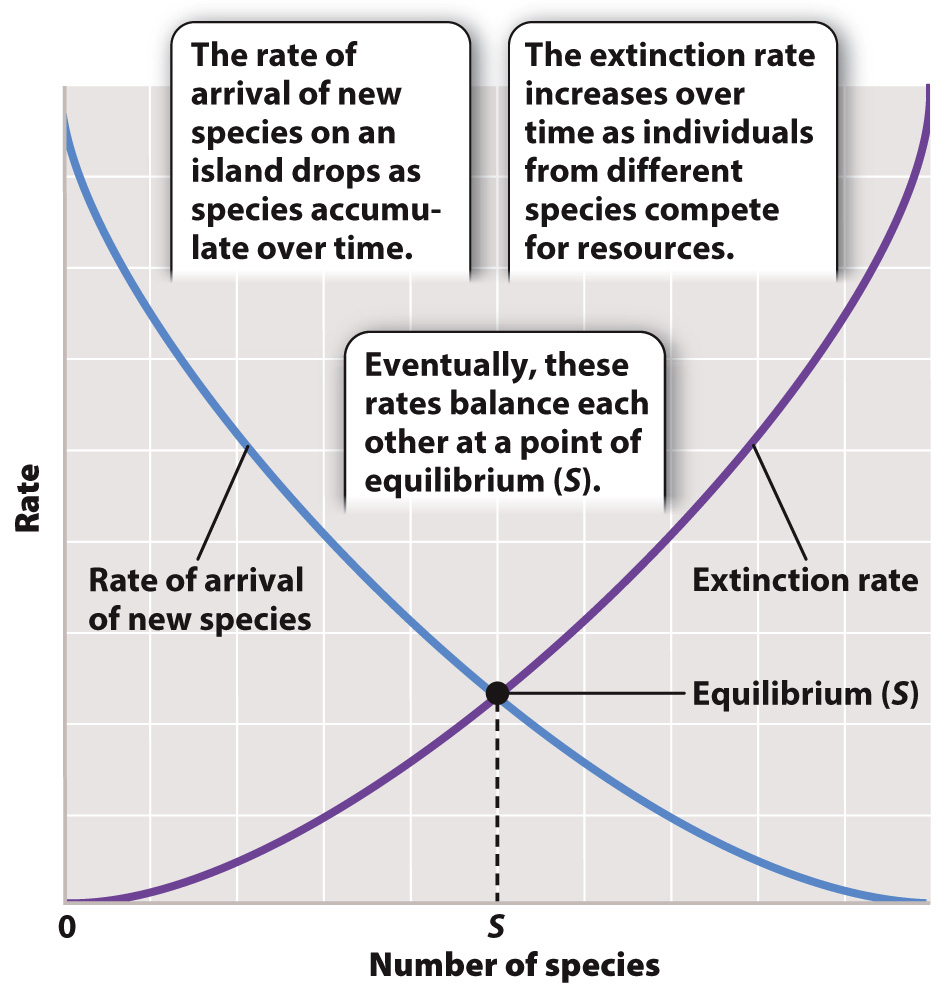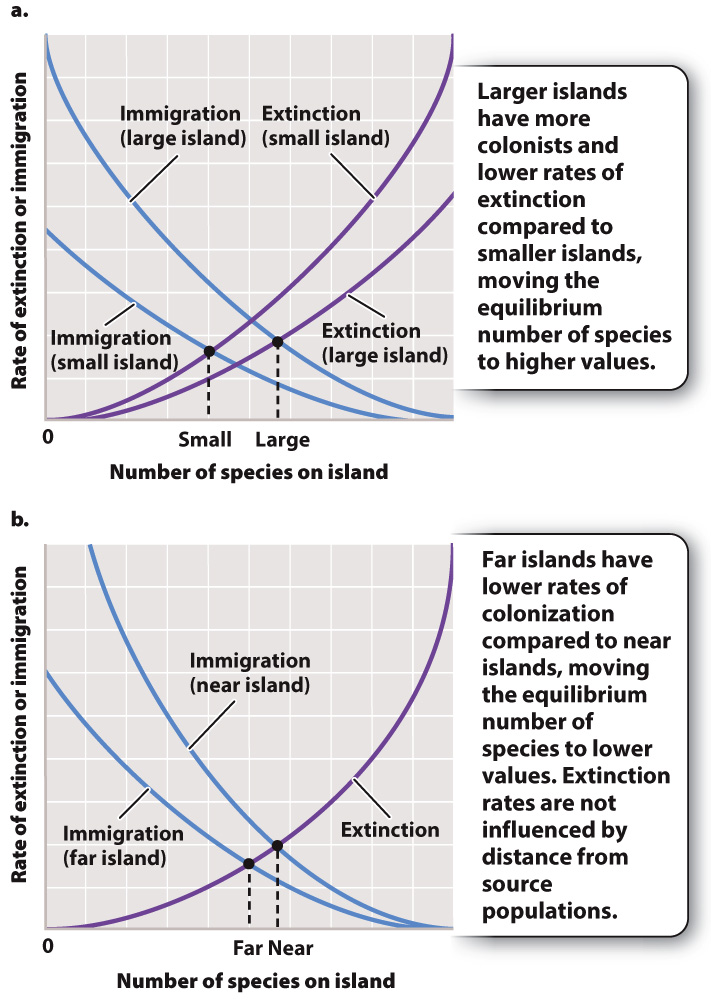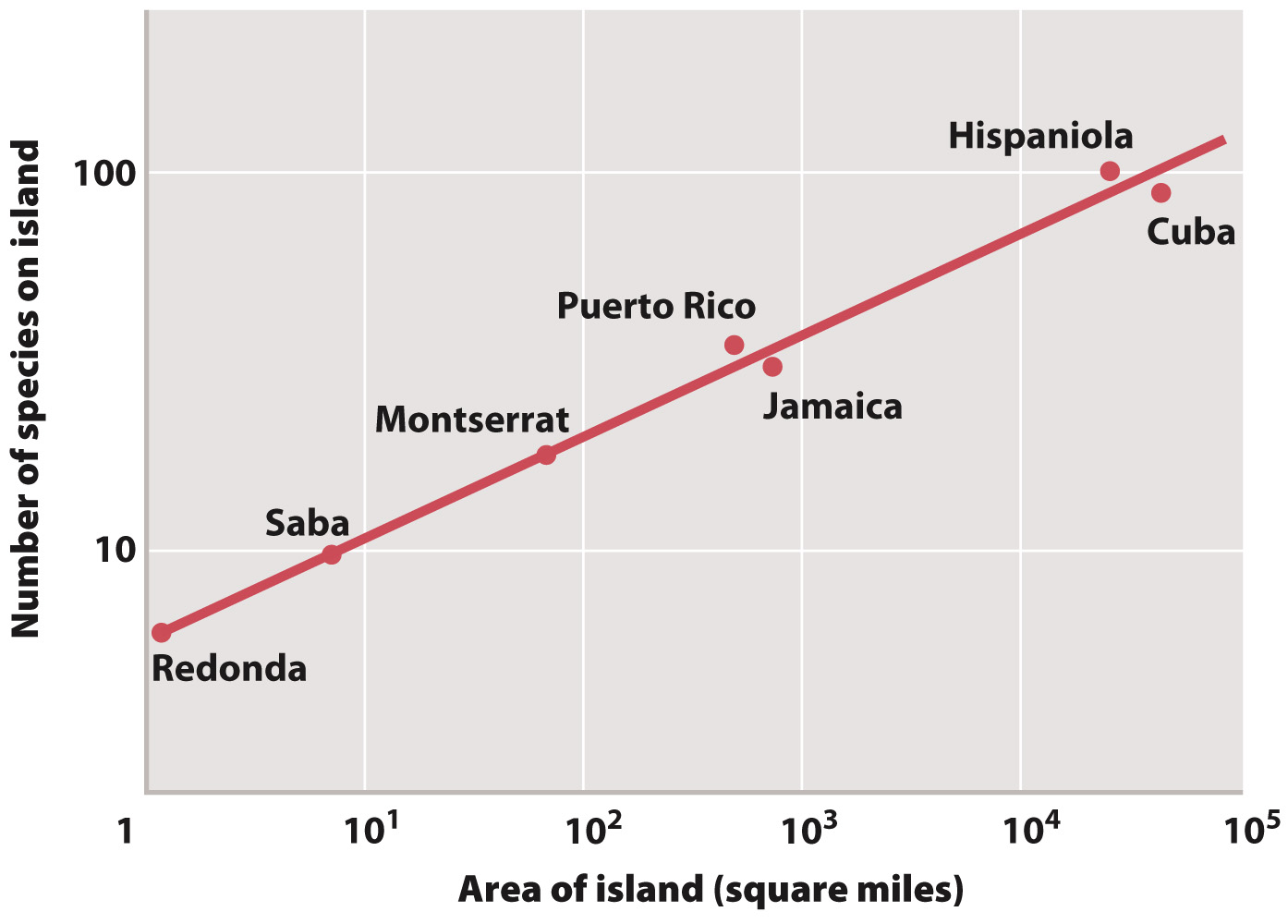Island biogeography explains species diversity on habitat islands.
Islands represent extremes in habitat patchiness for colonizing species—
Species diversity reflects both the rate at which new species arrive on the island and the rate at which species already on the island become extinct (Fig. 46.16). As species arrive on an initially uninhabited island, the colonization rate is high because there are no predators yet and the small number of colonists means that there is little competition for resources. As more and more species arrive and successfully establish themselves on the island, the rate of colonization goes down because competition and predation increase, making successful colonization more difficult, and because of the diminishing number of species left in the pool of potential colonists. In contrast, extinction rate goes up as newly arrived species compete.

At some point, there is a balance between the arrival of new species and the loss of species by extinction. At this point, diversity is said to be at equilibrium (Fig. 46.16). This does not mean that no new species will colonize the island, but instead that each new colonist species will be accompanied by the extinction of one already in place. There is generally turnover in species composition through time.
The theory of island biogeography, articulated in 1967 by the American biologists Robert MacArthur and E. O. Wilson, states that the number of species that can occupy a habitat island depends on two factors (Fig. 46.17). The first is the size of the island. Because of their size, larger islands receive more colonists than smaller ones. Furthermore, larger islands can support more species than smaller ones can, so extinction rate is lower. For these reasons, the equilibrium number of species for larger islands is greater than that for smaller islands (Fig. 46.17a).

The second key factor is the distance of the island from a source of colonists. More distant islands have lower rates of colonization, moving equilibrium species diversity toward lower values (Fig. 46.17b). The theory of island biogeography therefore predicts that the equilibrium number of species on an island reflects two processes, competition and colonization. If one or the other of these processes is not important, then observations on the diversity of species on islands will not correspond to prediction based on the theory.
Wilson and his student Daniel Simberloff tested the theory of island biogeography in a novel way. Working among small mangrove islands off the Florida Keys, they used short-
Fig. 46.18 shows the relationship between island size and species number. Similar relationships between island size and equilibrium species diversity have been observed repeatedly. The relationship can be described mathematically as a species–
S = cAx
where S is the number of species at equilibrium, c is a mathematical constant that depends on the species in question, A is the habitat area, and x is an experimentally determined exponent that relates island size (A) to the number of species (S) on the island and is between 0.1 and 0.4. The fact that the value of x falls in this narrow range indicates not only that larger islands support more species than smaller ones, but also that there is a quantitative relationship between island size and species number.

A useful back-
Island biogeography theory has been widely applied, but it has some limitations in representing island colonizations over long evolutionary time frames. For example, the theory treats all potential colonists as equally able to colonize a new island, when in fact they are not all equally able to arrive or form an association with species already in place. These abilities are often determined by a species’ particular evolutionary history. For example, flying animals like bats and birds more frequently arrive on oceanic islands than nonflying animals like rodents, lizards, and frogs. In contrast, the nonflying animals that colonize successfully more often evolve into multiple new species on islands. If these new, closely related species cannot themselves colonize another area, they will be found nowhere else in the world; these are called endemic species.
Quick Check 5 Two islands lie off the coast of Florida. One is larger and the other is closer to the mainland. What determines which one will have more species?
Quick Check 5 Answer
The closer island will initially receive more colonists than the farther one, but the larger island can eventually support more kinds of species.